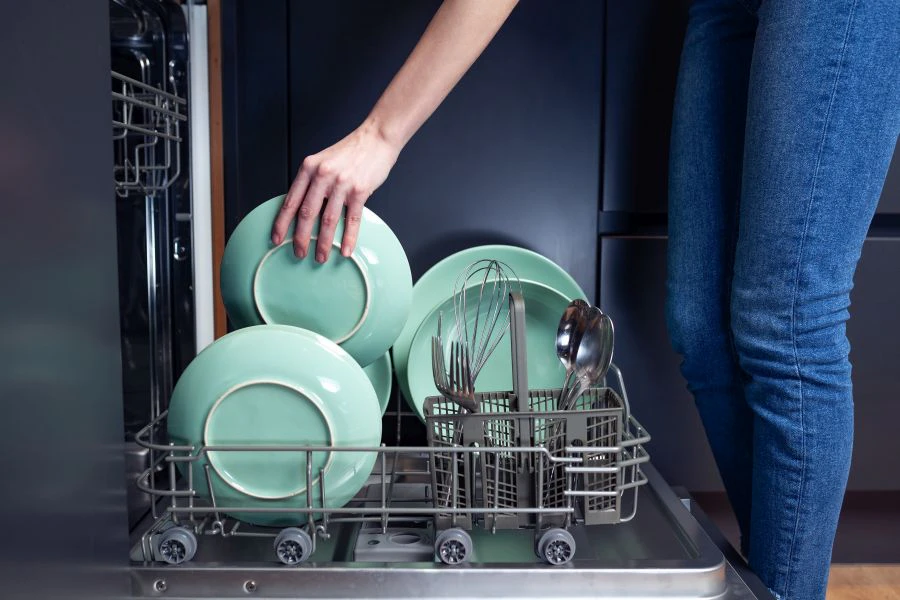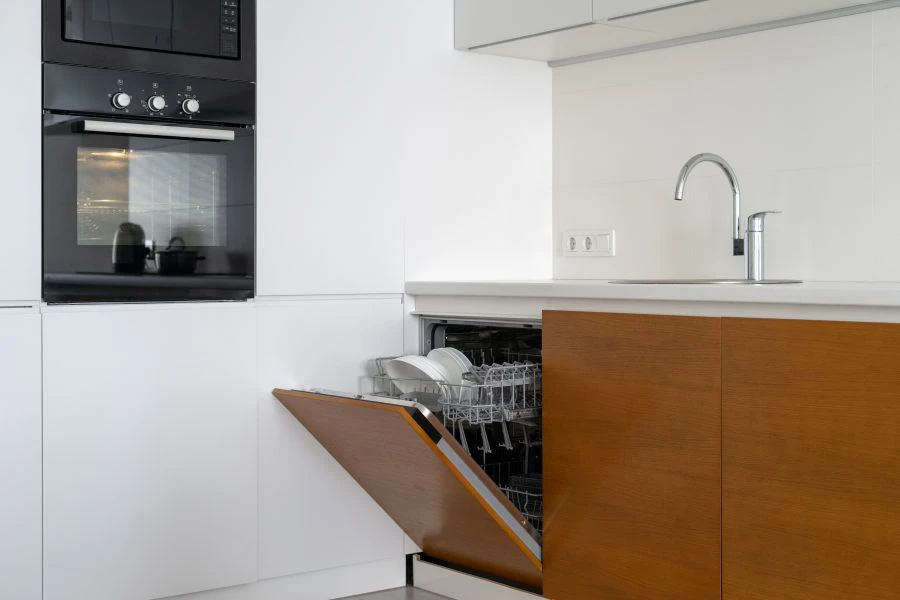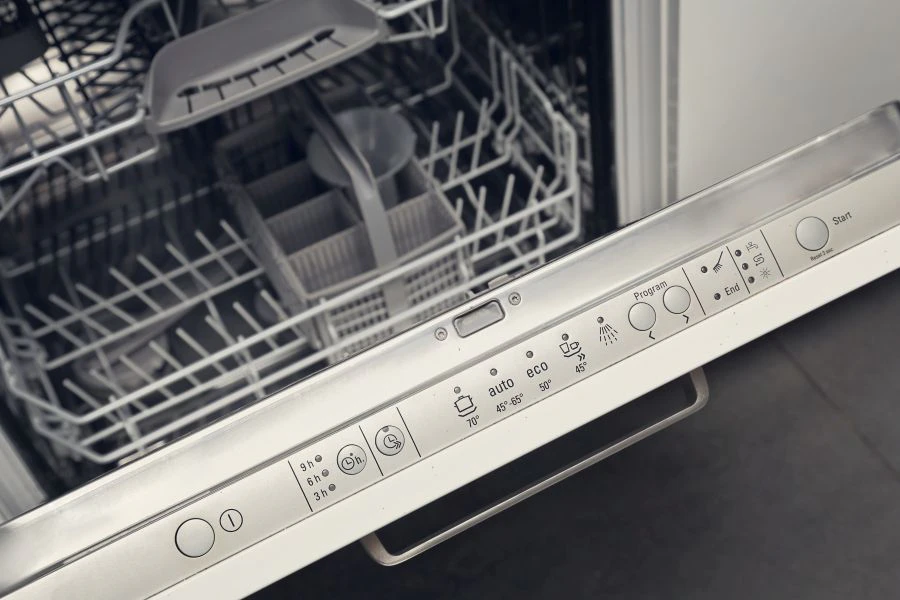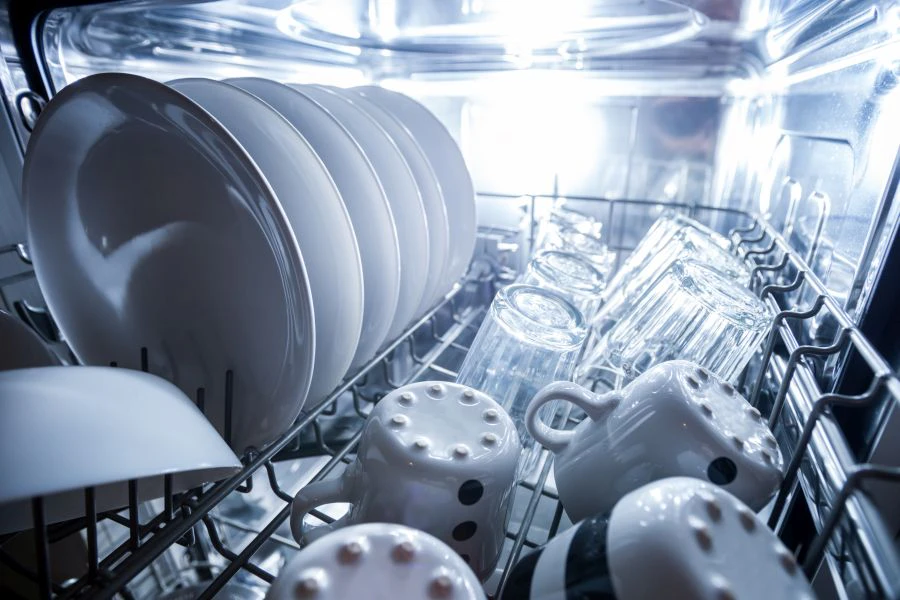
Appliances
Opt for an efficient and practical model
Is it that hard to choose a dishwasher? We just expect that it should wash our plates, right? Certainly, but not all are the same and depending on your needs, certain characteristics should be preferred over others. To choose an efficient and practical model, here is our guide.

Which capacity to choose?
Like all household appliances, dishwashers are available in several sizes. The standard width is 60 cm and allows, depending on the model, to wash between 12 and 16 place settings. The narrow 45 cm wide models handle 9 to 11 place settings.
There are also even more compact appliances that can be placed on a worktop, or on top of a washing machine, and are sometimes equipped with hobs. Intended for very small spaces, their capacity does not exceed 3 or 4 place settings. This type of device is rather designed for mobile homes, boats, etc.
When you lack space in your kitchen, which is quite common in the city, widths of 45 cm can be practical. For a family, these models will require several cycles per day. On the other hand, deciding on a narrow device because you are alone is a bad calculation. If space is not a problem, it is much more advantageous to turn to standard widths. Between breakfast, snacks, preparations that require dirtying more dishes than usual, on days of the week when we have three meals at home the dishwasher fills up quickly.
The built-in dishwasher
So that the appliance visually integrates into the kitchen, the built-in dishwasher is a very aesthetic solution. There are standard and narrow width dishwashers that can be built-in as well. If you want to cover the door with a decorative plate in order to integrate it into a piece of furniture, we advise you to check that the option is provided, this is not always the case. Likewise, if the dishwasher must be slid under a worktop, check its height as well as the possibility of removing the top plate.
When the appliance is of narrow width, also take into account the fact that it will leave an empty space of 15 cm on the front if the kitchen furniture equipment units or other appliances are in standard width and this has not been foreseen. Sliding an appliance under a worktop is not complicated, but for a real integration and the installation of decorative doors, it is preferable to call in a professional.


Is the cutlery drawer essential?
Long reserved for high-end devices, the cutlery drawer has become more affordable. However, in most cases it does not replace the cutlery basket that is used for knives and other forks. This drawer is intended for washing the smallest cutlery, such as (very small) teaspoons or those whose shape or narrowness requires that they be laid flat: skewers, seafood utensils, mandolins, garlic press, etc. On the other hand, it is not recommended to use it for silverware, as the rules to be followed for treating silverware in the dishwasher are restrictive.
Options to be checked
From one meal to another, from one family to another, the dishes to be washed are not always the same. Also, it is important that the dishwasher has the most flexible drawer and basket system possible. It is therefore very practical to be able to easily change the height of a drawer to adapt to a particularly large dish or pan.
What is the energy and water consumption of a dishwasher?
Dishwashers, like all appliances sold in the country, must meet certain European standards in terms of energy efficiency. The mandatory orange label informs about the consumption of dishwashers. The most economical devices, classified A +++, consume 10 liters of water per cycle. So it's less than washing dishes manually when you let the tap run. When it comes to electricity, the dishwasher also consumes less energy than washing dishes by hand. Electricity consumption is halved, the device using less energy to heat water than a conventional boiler.
Washing programs
Like washing machines, the dishwasher has different washing programs suitable for all uses. Quick or eco program when the dishes are not dirty, delicate, half-load or on the contrary pre-wash and intensive program to get rid of the most stubborn traces. When the device can dry the dishes, several options are also provided. It is quite common to have a delayed start of up to 24 hours, which is quite practical when you have taken out a day / night electricity subscription that takes into account off-peak hours.
On some models, there is also an appliance self-cleaning program. This cleaning should be done 2 or 3 times a year, but in the absence of a specific program, you can just run the dishwasher when it is empty.
Following a strong trend, most recent models are equipped with sensors that analyze how dirty the dishes are and accordingly adapt water consumption, temperature and duration of the cycle.


Sound emission level
Generally speaking, a dishwasher is much quieter than a washing machine. Here, no spinning or rotation of the drum, since it is the pressure of the water that sets the rotating jets in motion. However, some devices are more discreet than others. The orange label with energy information also provides information on the sound emission level of the devices. This emission level, noted in dB (decibels), is considered noisy when it reaches 49 dB. The most discreet dishwashers emit between 38 and 41 decibels.

 Denmark (Danish)
Denmark (Danish)  Deutschland (Deutsch)
Deutschland (Deutsch)  España (Español)
España (Español)  France (Français)
France (Français)  Italia (Italiano)
Italia (Italiano)  Nederlands (Dutch)
Nederlands (Dutch)  Polska (Polski)
Polska (Polski)  Russia (Russian)
Russia (Russian)  Sweden (Swedish)
Sweden (Swedish)  Turkey (Turkish)
Turkey (Turkish)  Ukraine (English)
Ukraine (English)  United Kingdom (English)
United Kingdom (English)  USA (English)
USA (English)  China (Chinese)
China (Chinese)  Hong Kong (English)
Hong Kong (English)  India (English)
India (English)  Indonesia (English)
Indonesia (English)  Lebanon (English)
Lebanon (English)  Saudi Arabia (English)
Saudi Arabia (English)  Thailand (English)
Thailand (English)  Vietnam (English)
Vietnam (English)  Algeria (Français)
Algeria (Français)  Egypt (English)
Egypt (English)  Australia (English)
Australia (English)